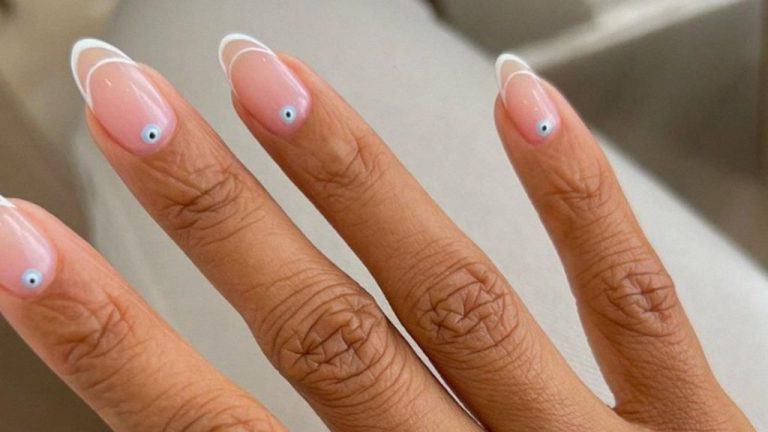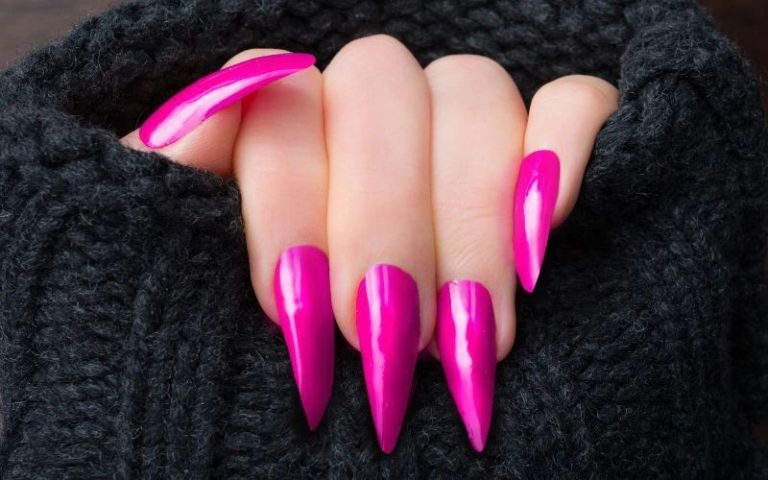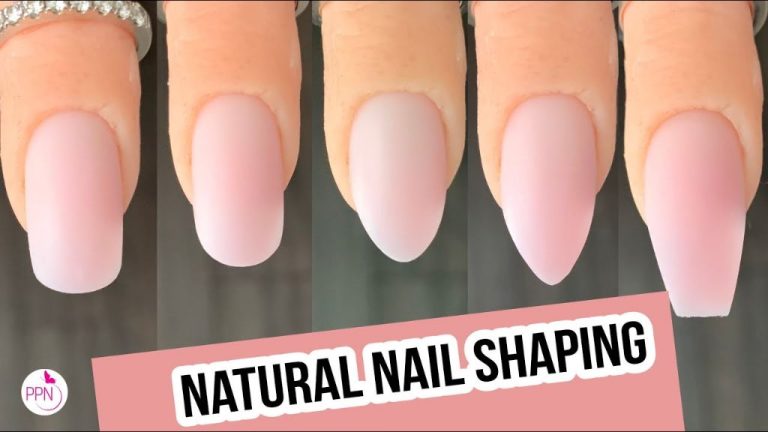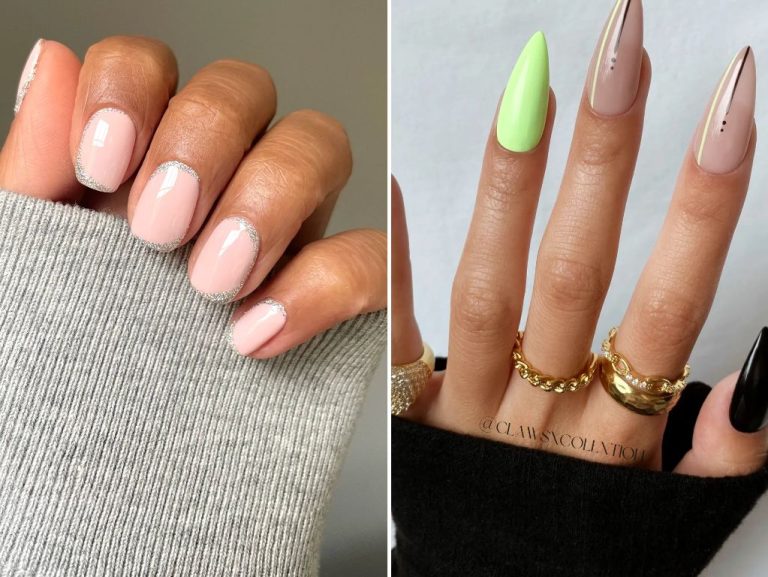Edge Nails: A Modern Take On Traditional Nail Shapes
Nail art and shapes have a long history spanning many cultures and trends. The ancient Egyptians used nail polish and shapes to signify social status. Sharp stiletto and talon shapes became popular in the 1990s with celebrities like Lil Kim and Aaliyah. More recently, edge and geometric nail shapes have come into vogue, built upon this long history of creative nail art.
Edge or geometric nail shapes utilize straight lines and sharp angles instead of the typical rounded ovals of traditional nail shapes. Rather than a smooth curve, edge shapes like squovals, squares, and triangles create a stark, fashion-forward look. The precision of the straight edges and points adds visual drama and interest. Though edgy nail shapes require more maintenance, many nail art enthusiasts enjoy experimenting with these modern takes on classic looks.
Edge Nail Inspiration
The edge nail shape draws inspiration from minimalist design and architecture. Clean lines, geometric shapes, and negative space are hallmarks of minimalism that translate beautifully to nail art. This modern aesthetic emerged in visual arts and architecture in the 1960s and 1970s as a countermovement to the complexity and clutter of mid-century design. Artists and architects like Mies van der Rohe, Frank Lloyd Wright, and Buckminster Fuller advocated for simplicity, functionality, and purposeful forms.
Edge nails similarly utilize sharp lines and basic shapes for a polished, streamlined look. The approach celebrates the natural shape of the nail bed rather than disguising it under layers of color. The minimalist nail shape provides a creative blank canvas for graphic prints and bold colors inspired by modern fashion. Designers like Mary Quant and Pierre Cardin introduced mod styles in the 1960s featuring graphic, Pop Art-inspired patterns. This aesthetic carries through to modern edge nail art featuring vibrant colors, prints, and shapes applied over a pared-down base.
Overall, the edge nail trend combines the sleek minimalism of mid-century design with the graphic, youthful styles of 60s fashion for a contemporary take on nail art.
Popular Edge Shapes
While there are many variations of edge nail shapes, a few of the most popular edge styles include:
Squoval
The squoval shape is a hybrid between square and oval nail tips. As described by Allure, this shape “has the straight-across tip of a square nail but is rounded at the edges” (https://www.allure.com/story/popular-nail-shapes). Squoval nails offer a fresh spin on the classic square shape.
Square
Square nails have straight edges and sharp 90-degree angles. This bold look has been popularized by celebrities like Rihanna and makes a dramatic style statement. The straight edges accentuate the fingers and create the illusion of length.
Angular/Triangular
Angular or triangular nails have prominent pointed edges at the tips. The sharp angles create a fierce, edgy look. As noted by Popsugar, these statement edge shapes are trending for summer with “just a hint of a point” (https://www.popsugar.com/beauty/edge-nail-shape-trend-48395497). The triangular shape is eye-catching and contemporary.
Creative Takes on Edges
Some creative ways to jazz up a basic edge nail shape include using ombre colors, adding jewels or other embellishments, or doing two-toned edges. Here are some ideas:

Ombre edges create a gradient look by blending two or more polish colors on the tips. Start with the lightest color near the cuticle and apply progressively darker shades as you work outward towards the edge. This looks beautiful on short or long nails. Clean up the edges with a small brush for a defined line.
Jewels, glitter, or other embellishments can instantly make an edge style more glam. Try studding the tips with small gems or metallic beads, or use glitter polish, striping tape, or decals to accentuate the edges. Keep the base color neutral to really make the details pop.
Two-toned edges allow you to play with colorblocking on the nail tips. Paint the bottom half of the nail in one shade, then switch to a contrasting color on the outer edge. The seam between the colors can be straight, diagonal, zig-zagged, or wavy for lots of fun options.
Choosing Your Shape
When selecting an edge nail shape, it’s important to consider your natural nail bed length and shape. Shorter nail beds work best with a more dramatic tapered edge, while those with longer nail beds can opt for a squarer shape.
The edge shape you choose should also complement the length and shape of your fingers. For example, very pointed edges tend to elongate the look of your fingers. A shorter squoval or rounded edge can help shorter nails look more proportional. According to nail care experts, “This shape will lengthen and make short fingers look slim” (Source).
Nail shape guides often suggest the most flattering options based on your nail bed length. However, the most important factor is choosing an edge shape you feel confident and comfortable wearing. The perfect shape for you is ultimately a personal preference.
Filing Tips
Proper nail filing technique is crucial for achieving the perfect edge shape. Here are some key filing tips:
Use proper nail files. Nail files come in different grits – 100/180 grit files are better for shaping, while 240/320 grits are better for smoothing and finishing the edges. Using the right grit file prevents filing too much off the nail.
File straight across rather than in a sawing motion. Hold the file perpendicular to the nail’s edge and file in one direction to keep the shape even. Filing back and forth can create notches in the edges.
Smooth the corners. Use a fine grit file to soften and round the edges, especially around the corners. This prevents corners from catching and splitting. Gently file off any ridges or bumps for a flawless edge.
Always file gently to avoid thinning out the nails. Let the file do the work – don’t apply too much pressure.
Check nail shape symmetry by holding hands together and comparing both hands. File a little more if needed to achieve the perfect shape.
Finish with a buffer block or shine file to get an ultra-smooth edge.
Moisturize nails and cuticles after filing to prevent dryness and splits.
Applying Color
The right color application can really make your edge nails pop. Here are some tips for choosing and applying polish:
Use thin polish layers. Too much polish can make edges look bulky, so apply polish in 2-3 thin, even coats for a sleek look.
Try solid colors or French tips. Solid colors look modern and chic, while French tips accentuate the edge shape. Sheer neutrals like nudes and pale pinks work well.
Consider nail art. Studs, glitter, and simple stripes placed right on the edge can make them stand out. Geometric shapes or negative space designs complement the linear edge shape.
Maintenance
To keep your edge nails looking clean and polished, it’s important to practice proper maintenance techniques. According to Seki Edge experts, filing regularly is key
https://www.seki-edge.com/nail-care/. File nails every 2-3 days to keep the edges smooth and even. Use a high-quality file like the Seki Edge files which are gentle on nails.
Applying cuticle oil daily will also help maintain strong, healthy nails that can support the crisp edges. Massage the oil into the cuticles and nails to condition them. Avoid breaks and chips by using your hands gently – beware of snagging nails on fabrics or banging them on hard surfaces.
With regular filing and moisturizing, your fashionable edged nails can stay looking fabulous and durable.
Pros and Cons
Edge nail shapes have unique pros and cons to consider before getting them done (source). The main pros of edge nails are that they provide a bold, modern look that stands out. The angled edges and points elongate the fingers and make nails appear longer, even if they are short. Edge shapes also tend to suit short nails very well.
However, there are some drawbacks to weigh. Edge nail shapes require higher maintenance since the edges and points can chip or crack more easily. The sharp angles and corners also can catch onto things like hair, clothing, etc. Overall, edge shapes create a dramatic, fashion-forward look but need a bit more care.
Conclusion
We’ve explored a variety of edge nail shapes like the pointy stiletto, angular geometric, whimsical squoval, and neutral soft square. The possibilities are endless when it comes to edgy nail art. Think outside the box and don’t be afraid to file your nails into unique shapes.
When trying this trend, start with shorter nails first to get comfortable. Use nail guides and tape for straight lines. Go slowly and gently when filing to avoid breaks. Apply a good base and top coat for protection and shine.
Look on Instagram or Pinterest for edge shape inspiration from nail artists. Save photos of designs you love. Bring examples to your manicurist. Have fun with this look and express your personal style.
Edge nails allow you to reinvent the classic manicure. With the right shape and colors, your nails can make a bold fashion statement.



